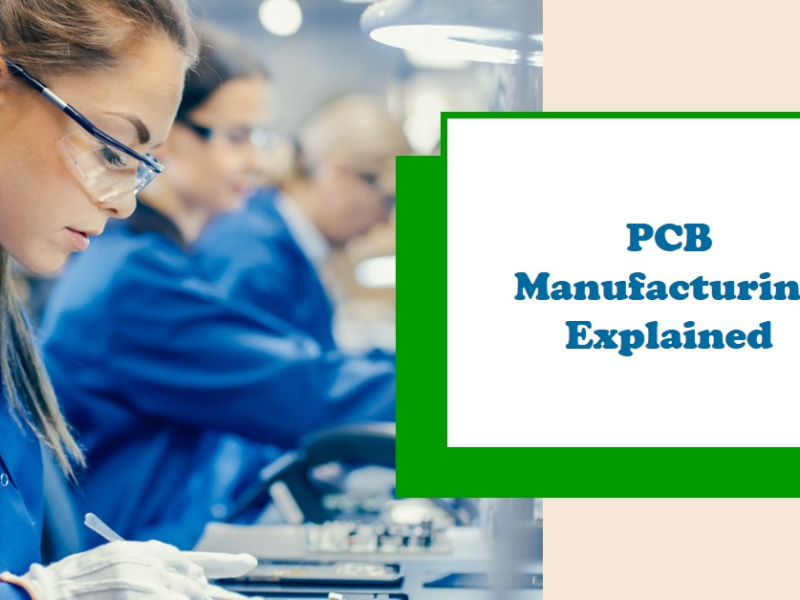
Are you curious about how your electronic devices come to life? Have you ever wondered what goes into the manufacturing process of printed circuit boards (PCBs)? Look no further! In this blog post, we’ll take a deep dive into the world of PCB manufacturing and explore each step from design to assembly. Get ready to learn about the intricate processes that bring your favorite gadgets to life!
PCB Manufacturing Process
PCBs are manufactured by a variety of processes. The most common is the lithographic process, in which designs are created on a computer and transferred to a thin film material (usually copper) that is then printed onto large sheets. This process is used to create circuit boards, motherboard assemblies, and other electronic components.
The next step in the PCB manufacturing process is the etching process. Here, the copper film is etched with a chemical solution to create trenches and other shapes. The trenches help hold the electronic components together and protect them from environmental harm.
The last step of the PCB manufacturing process is soldering. Solders are applied to the joints between electronic components and the board substrate, and heat causes them to flow together securely. This process ensures that all of the connections between components are sturdy and secure.
Theory of PCB Manufacturing
PCB manufacturing is a process that starts with designing the circuit board. A computer draws the diagram of the circuit, which is then sent to a PCB manufacturer. The PCB manufacturer uses a machine to create the circuit board. This machine has many different tools that are used to cut and shape the plastic boards.
After the circuit board is created, it needs to be assembled. This involves connecting all of the wires and components on the board together. There are many different ways to do this, and each method has its own set of pros and cons. One popular way is called manual assembly, which requires a lot of skill and experience.
Materials Used in PCB Manufacturing
PCB manufacturing is a process for making printed circuit boards. The raw materials and equipment used in PCB manufacturing vary depending on the board type.
The most common type of PCB is aprinted circuit board, which is a piece of electronic equipment madeup of many small printed circuits. Printedcircuit boards are usually rectangular, but they can also be shaped like other objects, such as wires or circles.
There are many different types ofprinted circuit boards, but the most common ones arecalled “surface-mount” boards. Surface-mountboards are made up of tiny pins that are inserted into holes on the Printed Circuit Board (PCB). These pins can then be connected to other parts ofthe board using wires.
To make a surface-mountboard, the raw materials and equipment used in PCBmanufacturing vary depending on the board type. For example,for an integrated circuit (IC) board, the rawmaterials include silicon chips and copper traces. IC boardsare very complex and require a lot of precision whenbeing manufactured.
For a simple printed circuit board(PCB), however, therawmaterials may include just paper and plastic layers.
Equipment Used in PCB Manufacturing
Electronic components are fabricated on Printed Circuit Boards (PCBs). The PCB is a thin, flexible sheet of copper that is used to interconnect electronic circuits.
The PCB manufacturing process begins with the layout of the electronic components onto the board. The component layout is created using a computer-aided design (CAD) program and then transferred to a physical prototype board. The prototype board is used to test the functionality of the circuit before it is finalized for production.
After the component layout has been finalized, a lithographer produces a series of images on paper that represent each layer of the PCB. These images are then converted into a digital format and used by an etcher to create the actual PCB material. The etcher uses a high-resolution laser to burn tiny holes in the plastic substrate, which exposes the copper wires beneath.
The finished PCBs are then cut into individual boards using a CNC router. Each board is attached to its corresponding component with small screws or pins. Signal lines and power supplies are attached to individual ports on the boards, and the entire assembly is test-mounted in an electronic testing facility.
Conclusion
PCB manufacturing is one of the most complex processes that a manufacturer can undertake, and it’s essential that every step be done correctly in order to create a quality product. This article provides an overview of PCB manufacturing, from design to assembly, so you can understand each stage and how it contributes to the final product. If you’re involved in PCB production and want to ensure your products meet customer expectations, read on for more information.